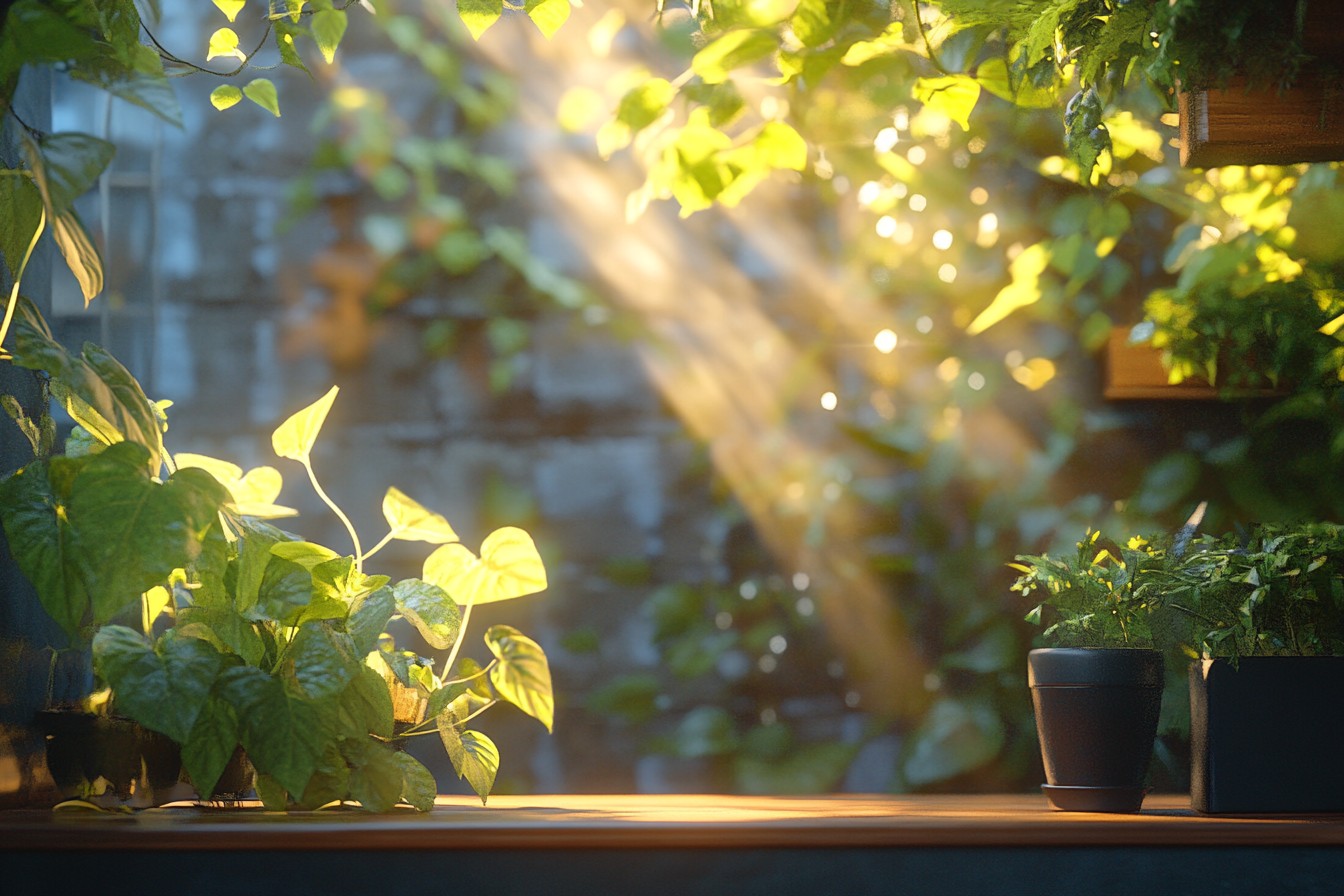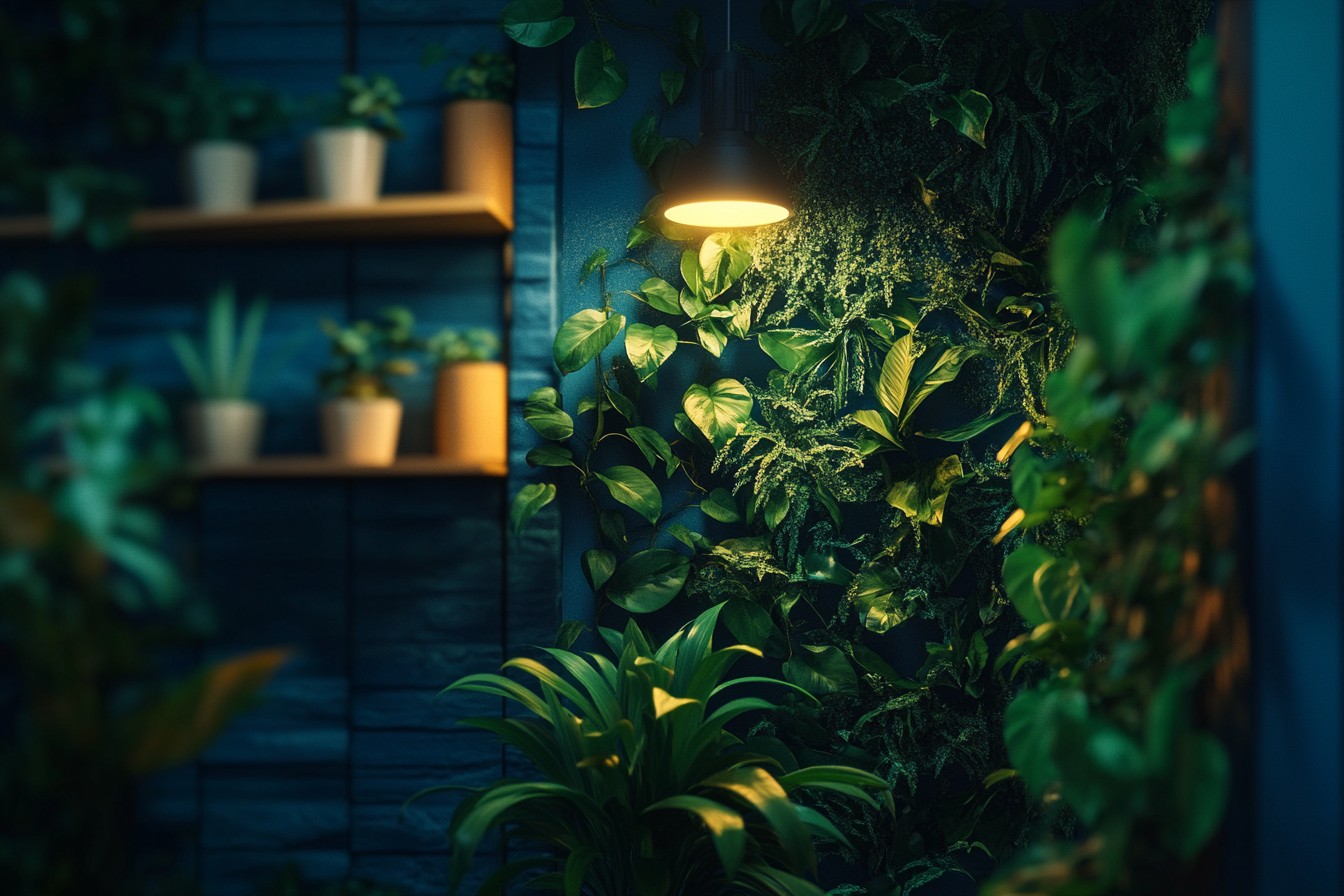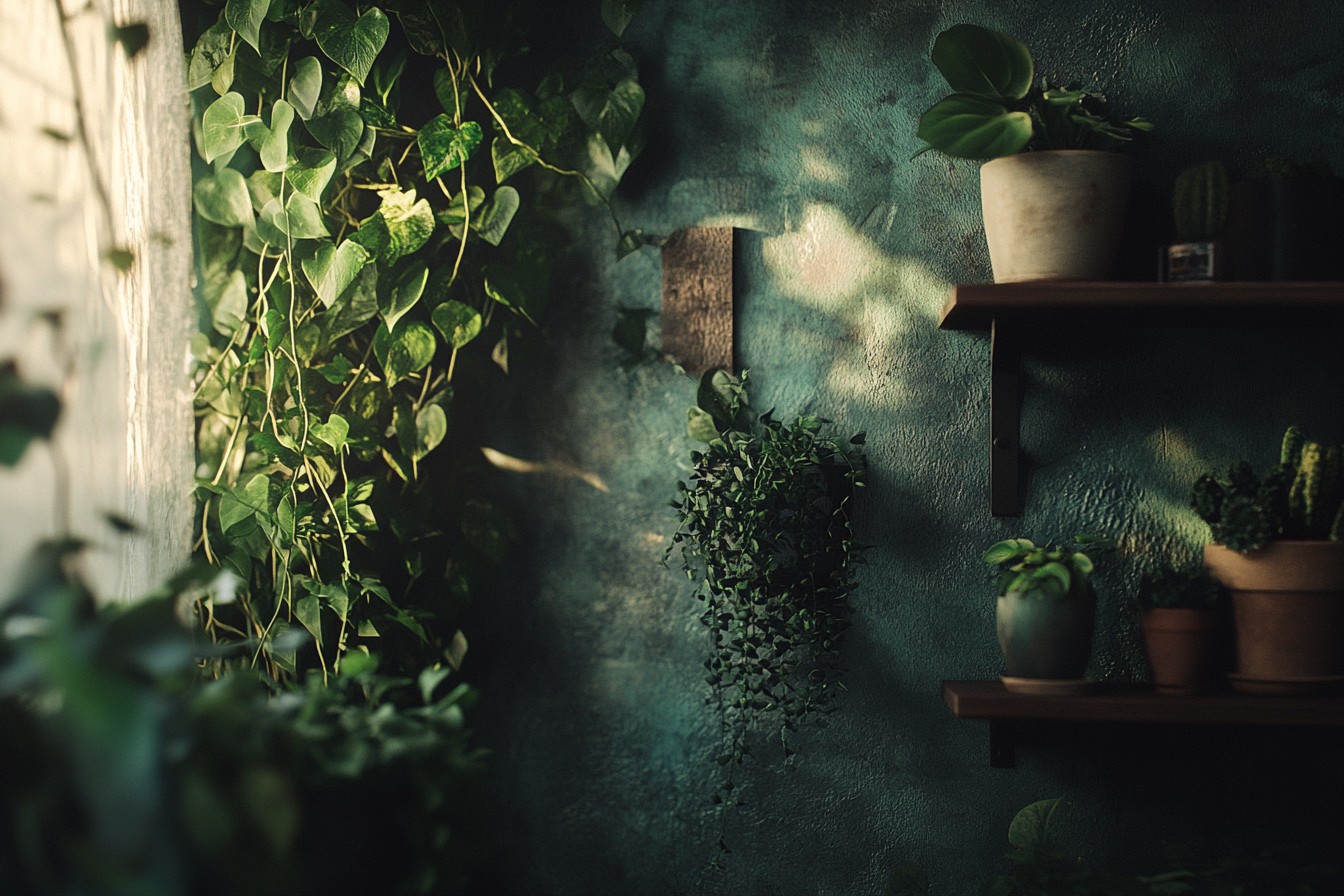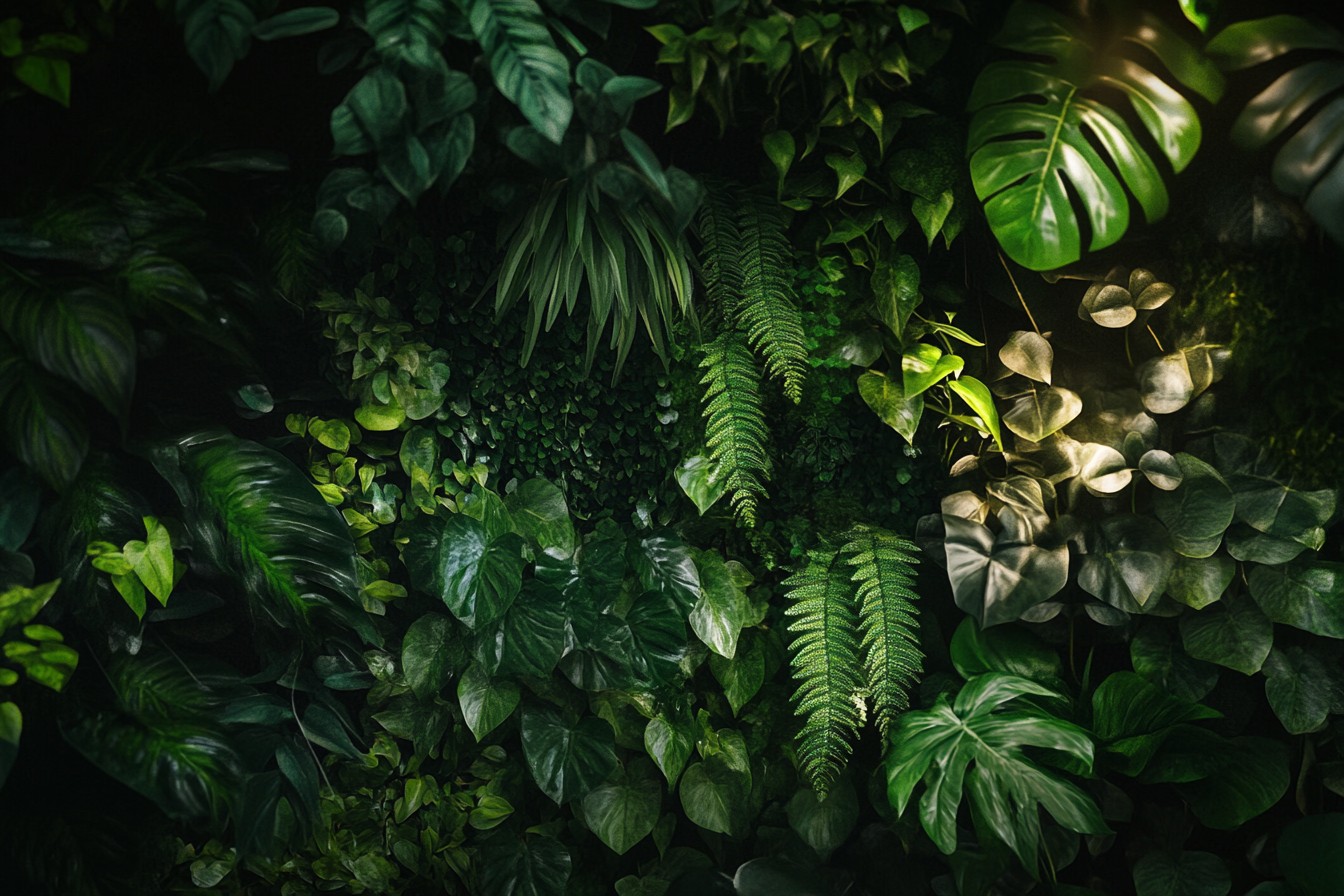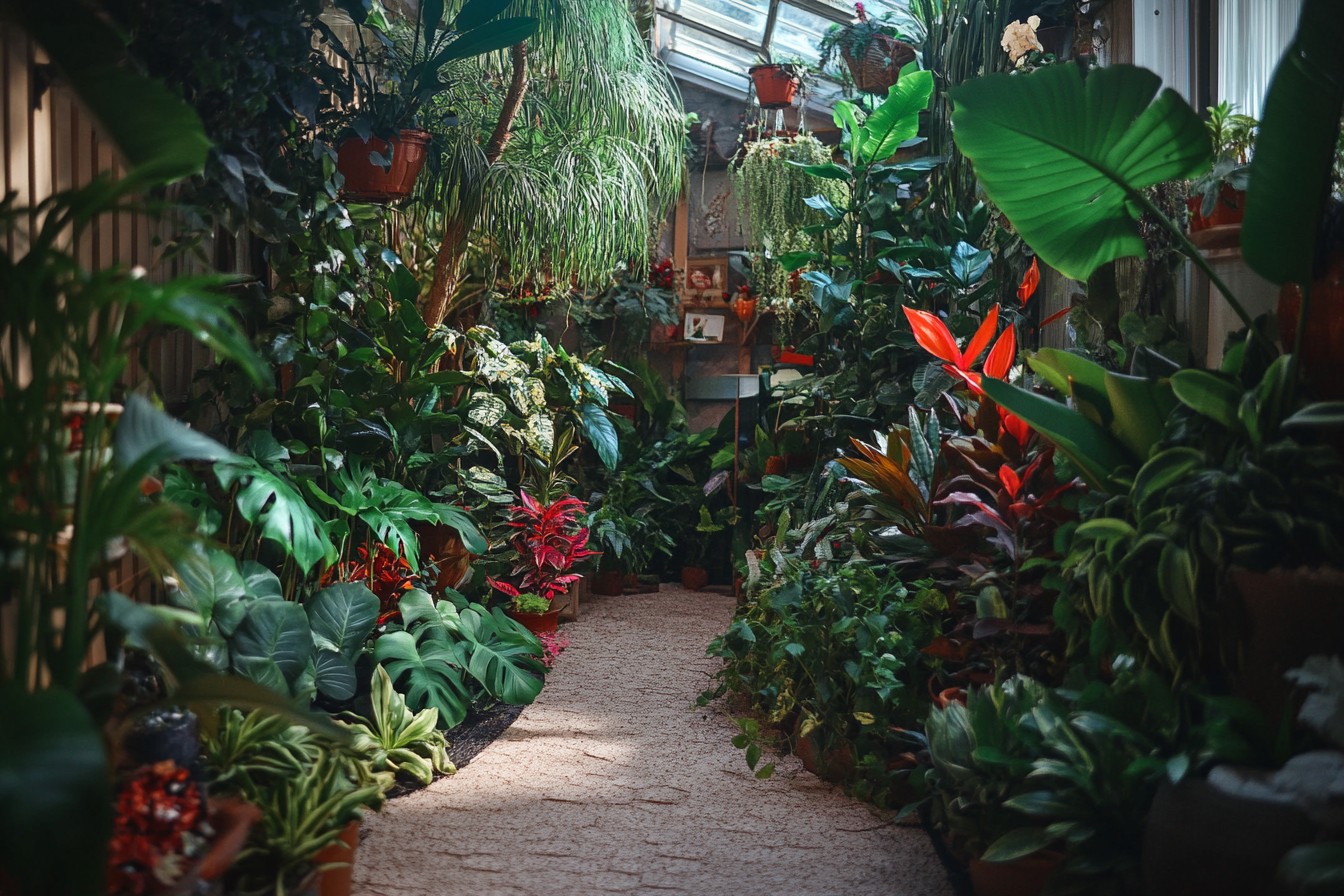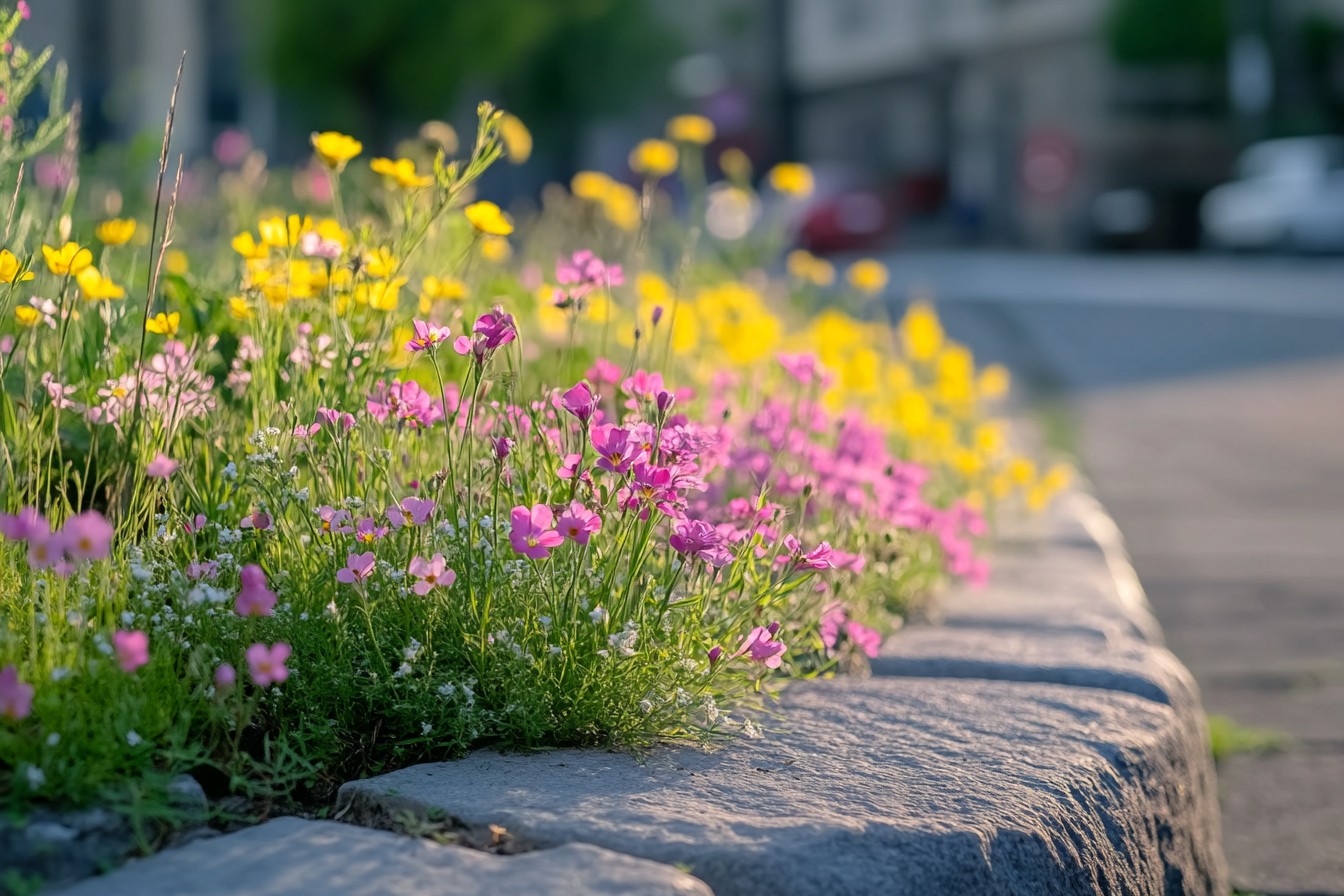There’s a special kind of shame that comes from realizing you’ve been paying rent on a corner of your apartment for three years without ever actually using it. This particular corner—a weird 3×4 foot space between my kitchen entrance and living room window—had become a sort of household purgatory. Too awkward for furniture, too visible for storage, it had gradually evolved into what my roommate Dave charitably called “the plant cemetery.” Dead or dying houseplants I couldn’t bear to throw away sat in a sad collection of mismatched pots, their withered leaves a testament to my inconsistent watering habits.
The only thing thriving there was dust. The revelation came during one of those pandemic cleaning frenzies when being trapped in your own space forces you to actually see it. I was Swiffering around the plant graveyard when my neighbor Sophia stopped by to drop off a misdelivered package.
She glanced at the corner and said with devastating casualness, “What are you paying in rent again? Like, per square foot?” Then she looked pointedly at the dead plants and empty Amazon boxes occupying what was probably $200 worth of monthly Chicago real estate. I’d like to say I had an immediate vision of transformation, but really, I just felt personally attacked by basic economics.
That night, I lay awake thinking about that stupid corner. If I couldn’t use it for anything practical, could I at least make it… nice?
The idea of a living wall had been floating around my Pinterest boards for years—one of those “someday when I own a house” projects that renters file away in the fantasy category along with kitchen renovations and basement workshops. But why not now? Why not in a rental?
Why not in that weird, awkward, useless corner? The next morning, over coffee, I announced to Dave that I was building a living wall. His response—raising an eyebrow and saying, “Is this like the time you decided to make sourdough bread and we had jars of flour paste reproducing on the counter for three months?”—was not exactly encouraging.
But I was determined. This wasn’t just about plants anymore; it was about reclaiming wasted space, financial efficiency, and maybe proving I wasn’t actually a serial plant killer. First step: research.
I fell down a multi-day internet rabbit hole of living wall systems, vertical gardening techniques, and plant selection guides. Most commercial systems cost approximately one kidney, and many required permanent installation—a non-starter in a rental with a security deposit I someday hoped to see again. DIY options ranged from Pinterest fails waiting to happen to engineering projects requiring tools I didn’t own and skills I didn’t possess.
The breakthrough came from an unlikely source—a restaurant bathroom. I’d stopped at a farm-to-table place for takeout and used their restroom while waiting. The entire back wall was covered in plants growing from what looked like modified rain gutters mounted horizontally.
It was beautiful, and more importantly, it looked achievable without an engineering degree. I took about 15 photos from different angles, earning a concerned look from someone washing their hands who clearly thought I was documenting the toilet for nefarious purposes. Armed with bathroom plant wall inspiration, I developed a plan.
The system would use vinyl gutters mounted on a freestanding frame, creating a non-permanent installation that wouldn’t damage walls. Each gutter would be drilled with drainage holes and serve as a planter for different types of plants. The frame would incorporate grow lights for our light-challenged Chicago apartment, and the entire thing would have a built-in irrigation system because I know myself well enough to recognize that any plant dependent on my consistent watering schedule is essentially on death row.
The materials list was deceptively simple:
– Vinyl gutters and end caps
– 2×4 lumber for the frame
– Grow lights and timer
– Small submersible pump
– Tubing for irrigation
– Reservoir for water collection
– Potting medium
– And of course, plants that might tolerate my particular brand of neglect
Construction began on a Saturday morning with what I assured Dave would be “minimal disruption.” Four hours later, our living room looked like a hardware store had exploded. I’d made six separate trips to Home Depot, each time remembering something else I needed. The kindly employee in the plumbing section now knew me by name and had started suggesting additional items before I even explained what I’d forgotten.
“You’ll need these connectors for that tubing,” he’d say, not even bothering to ask what I was building anymore. The frame construction went surprisingly well, possibly because I over-engineered it to the point of absurdity. If my living wall frame could survive a category 5 hurricane or small nuclear explosion, that was fine with me—better than having it collapse in the middle of the night, creating both a flood and a heart attack.
The gutters mounted easily to the frame with brackets, and I carefully drilled drainage holes that would allow water to cascade from upper levels to lower ones before ultimately reaching the collection reservoir at the bottom. The irrigation system proved more challenging. My first attempt involved flexible tubing running from a small submersible pump to the top gutter, with tiny holes poked at intervals to create a drip system.
In theory, perfect. In practice, I created what Dave described as “a prototype for water torture devices.” The pressure was wildly inconsistent, causing some areas to get power-washed while others remained bone dry. After several iterations and a minor flood that required the sacrifice of all our bath towels, I settled on a commercial drip irrigation kit designed for outdoor gardens, modified for my indoor system.
With the structure complete, I faced the plant selection challenge. The corner got decent ambient light but nothing direct, and even with grow lights, I needed species that could tolerate some neglect. Through extensive research (and by “research,” I mean polling every plant-savvy person I knew and haunting garden centers like some kind of horticultural ghost), I developed a list of candidates for different positions on the wall:
For the top level, which would receive the most light: pothos, philodendron, and spider plants—trailing species that could cascade down and create that lush, jungle-like effect I was aiming for.
For the middle sections: peace lilies, prayer plants, and various ferns that appreciate the consistent moisture a properly functioning irrigation system would provide. For the lowest level, which would be shadier: snake plants, ZZ plants, and calathea varieties that could handle lower light conditions. The planting day felt ceremonial.
I laid out all the plants, still in their nursery pots, arranging and rearranging them against the empty gutters like some kind of botanical puzzle. The potting medium wasn’t just soil—that would be too simple. I’d concocted a blend of coco coir, perlite, orchid bark, and worm castings designed to balance moisture retention with drainage, important for plants that would essentially be growing hydroponically with periodic soaking.
Installation day was a blur of soil, roots, and increasingly creative profanity as I realized that some of my plant choices were too large for the gutters and required emergency root pruning. By evening, the wall was planted, the irrigation system was connected, and the grow lights were installed. I stood back, covered in potting mix and unreasonably proud of what looked, I have to admit, like a bunch of sad plants stuck in rain gutters attached to an overbuilt wooden frame.
“It’ll fill in,” I assured Dave, who was eyeing the contraption with the expression of someone calculating water damage costs against a security deposit. “If you say so,” he replied, clearly unconvinced. “Just tell me the water stays in that bin at the bottom.”
The first week was terrifying.
Several plants immediately began dropping leaves—a plant’s way of expressing displeasure with its living situation. The irrigation system needed constant adjustment as I learned which sections dried out faster than others. I fretted over every yellowing leaf like a nervous parent.
But gradually, incredibly, things stabilized. The survivors began putting out new growth. The trailing plants started to actually trail.
The system achieved equilibrium, requiring only weekly reservoir refills and nutrient adjustments. By month three, the transformation was undeniable. What had been a collection of individual plants now appeared as a cohesive green wall.
The pothos and philodendrons cascaded dramatically between levels. The ferns had doubled in size, their fronds creating a lush middle section. Even the prayer plants, which I’d been warned were drama queens, seemed to be thriving in the consistent humidity created by the wall’s microclimate.
The unexpected benefits emerged over time. The wall functioned as a natural humidifier in our dry apartment, noticeably improving air quality during winter when the radiator heat typically turned the air to desert-like conditions. The gentle sound of water trickling through the system created a subtle white noise that masked street sounds.
And the psychological boost of a thriving green space during Chicago’s gray winters proved more valuable than I’d anticipated. There were challenges, of course. Fungus gnats discovered the consistently moist environment and arrived in force, requiring an integrated pest management approach including sticky traps, beneficial nematodes, and a layer of diatomaceous earth on all exposed soil surfaces.
A mysterious brown slime appeared in the reservoir once, necessitating a complete water change and disinfection that involved partially disassembling the bottom section—a task that left me questioning all my life choices. The most persistent issue was algae growth in the gutters’ drainage channels, which occasionally caused clogs and minor overflows. The solution came from an unexpected source—a small school of cherry shrimp, those tiny red aquarium cleaners, released into the reservoir.
They happily feast on algae and organic debris in the water system, creating a miniature ecosystem within the wall. Dave drew the line at adding fish, however, declaring that “this apartment is not becoming an actual swamp, no matter how cool you think that would be.”
As the wall matured, I made adjustments based on performance. Some plants clearly weren’t thriving despite my best efforts.
The calatheas, true to their reputation, were particularly finicky, their leaves curling and crisping despite seemingly perfect conditions. I replaced them with more resilient Chinese evergreens and additional pothos varieties. The prayer plants migrated to higher positions where they received more light, dramatically improving their growth and leaf coloration.
The maintenance routine stabilized to something manageable even for someone with my inconsistent habits. Weekly tasks include refilling the reservoir, checking pH and nutrient levels, and trimming any overly enthusiastic growth. Monthly, I do a more thorough inspection, clearing drainage channels and checking for pests.
Quarterly, I perform a system flush and nutrient refresh, which takes a couple of hours but keeps everything healthy. One year in, the transformation of that useless corner is complete. The living wall has become the focal point of the apartment, drawing comments from every visitor.
The formerly dead space now hosts over 30 thriving plants in a six-foot-tall vertical garden that occupies minimal floor space while maximizing visual impact. The grow lights, set on a timer, create a warm glow in the evening that eliminates the need for additional lamps in that area. Even Dave has come around, admitting that “it doesn’t look nearly as janky as I expected” and occasionally testing soil moisture when he thinks I’m not looking.
The economics worked out better than expected, too. The initial investment—approximately $350 for materials and plants—seemed steep until I calculated the value of the reclaimed space. In a Chicago apartment renting for $2.50 per square foot, that awkward 12-square-foot corner represented about $30 of monthly rent.
The living wall transformed wasted expense into productive, beautiful space, essentially paying for itself in less than a year while adding significant quality-of-life improvements. For anyone considering a similar transformation of dead apartment space, I offer these hard-earned insights:
Build for your actual habits, not your aspirational ones. If you know you’re forgetful about watering, an automated irrigation system isn’t a luxury—it’s plant life insurance.
Plan for maintenance access from the beginning. My initial design required moving the entire structure to access the reservoir, a flaw I corrected in version 2.0 by installing the reservoir on drawer slides for easy access. Start with bombproof plants and gradually experiment with more finicky specimens as you learn the microclimates of your wall.
My first-round pothos varieties are still the most reliable performers, while more exotic additions have had mixed success. Build in redundancy for critical systems. A backup pump and multiple drainage paths prevent catastrophic failures when something inevitably clogs or breaks.
Similarly, use waterproof materials throughout—MDF or particle board have no place in a system where moisture is constantly present. Accept that it’s a living system that will evolve. Some plants will thrive, others will struggle, and your wall will look different each month as growth patterns change.
This isn’t a static piece of furniture but an ongoing project. The most unexpected outcome has been the wall’s influence on the rest of my apartment. What started as a solution for one awkward corner has expanded into a broader greening of our living space.
The success of the wall system proved I wasn’t inherently a plant killer—I just needed systems that worked with my habits rather than against them. Now, strategic plant groupings with similar care needs occupy other previously underutilized spaces, each with irrigation systems tailored to their requirements. Sophia, the neighbor whose casual economic observation sparked this journey, now regularly stops by to check on the wall’s progress and has started her own (more modest) vertical garden project.
I’ve become the unlikely plant guru of our building, fielding questions about grow lights and drainage systems from neighbors who previously knew me only as “the guy who gets too many packages.”
Even my parents, visiting from Rockford last month, seemed impressed by the transformation. My father, a practical man not given to effusive praise, examined the frame construction, tested the irrigation system, and finally declared, “Seems solid.” From him, this is essentially a standing ovation. My mother took countless photos to show her garden club, though I suspect they were as much to prove that her formerly plant-killing son had reformed as they were to showcase the wall itself.
As for that sad collection of dying plants that once occupied the corner? Most were beyond saving, but a few resilient specimens made it into the new wall system. My favorite is a pothos that had been reduced to a single sad vine with three yellowing leaves.
Now it cascades four feet down the wall, lush and vibrant, a daily reminder that sometimes all it takes is the right system and a little stubborn determination to transform something from barely surviving to genuinely thriving. When I sign a new lease next month, I’ll face the decision of whether to disassemble the wall or leave it as an improvement to the apartment. I’m leaning toward leaving it, partly because it would be a shame to dismantle something that’s working so well, but mostly because I can’t bear the thought of returning that corner to its former state of wasted potential.
Some transformations, once made, simply can’t be undone—at least not without feeling like you’re moving backward rather than forward. Besides, explaining to the next tenant how to refill the reservoir seems easier than explaining to myself why I dismantled the most successful plant project of my life. Either way, that formerly dead corner has permanently changed how I think about urban living spaces—not as fixed environments to be accepted as they are, but as opportunities for creative problem-solving and small-scale environmental engineering.
If a chronically forgetful plant-killer can transform the apartment plant cemetery into a thriving vertical ecosystem, imagine what could be done with all the other overlooked, awkward, “useless” spaces hiding in plain sight in our homes.


